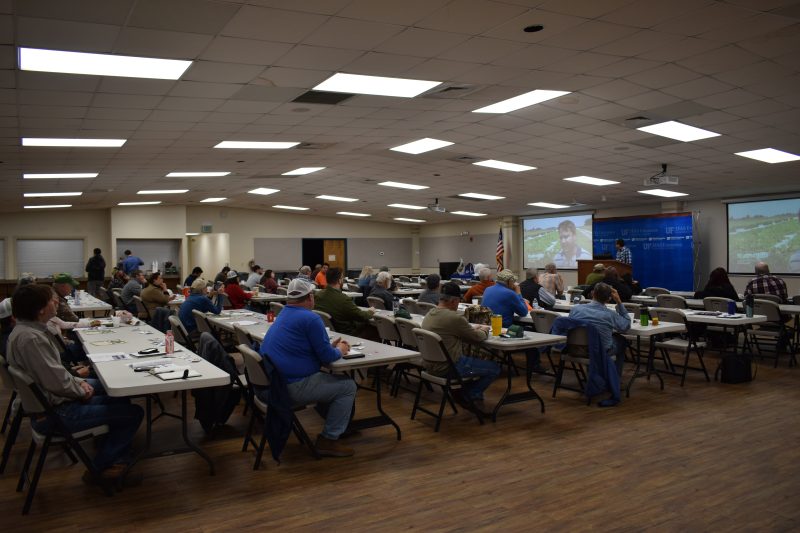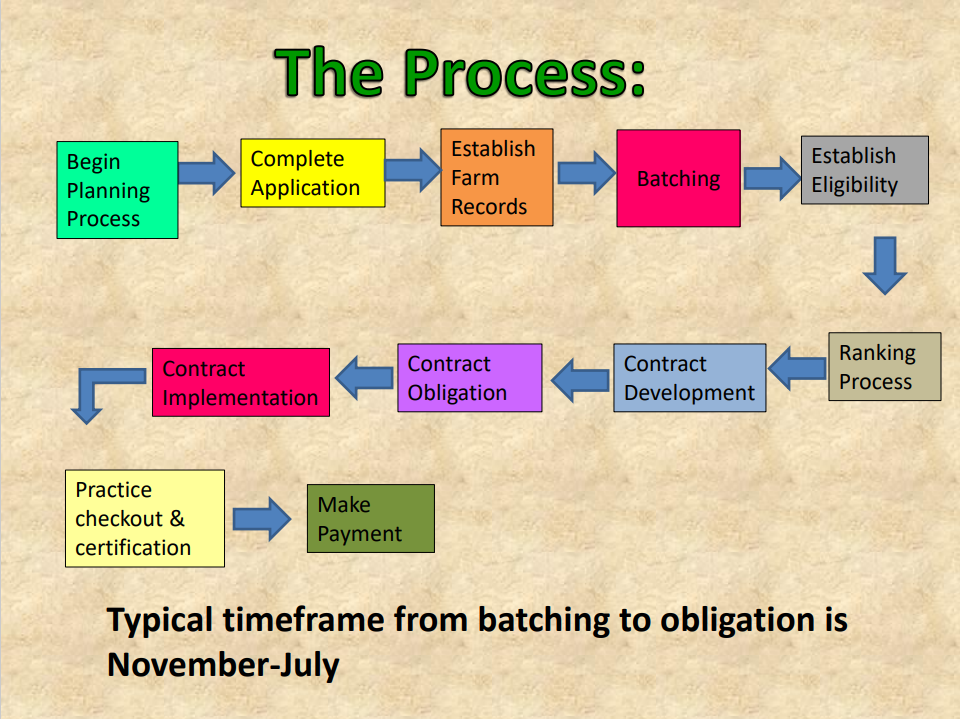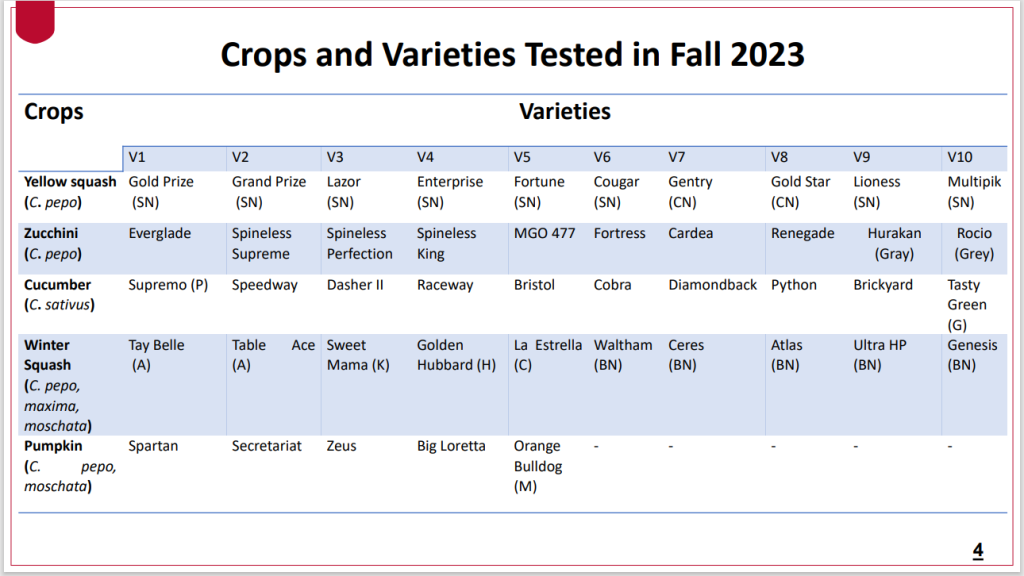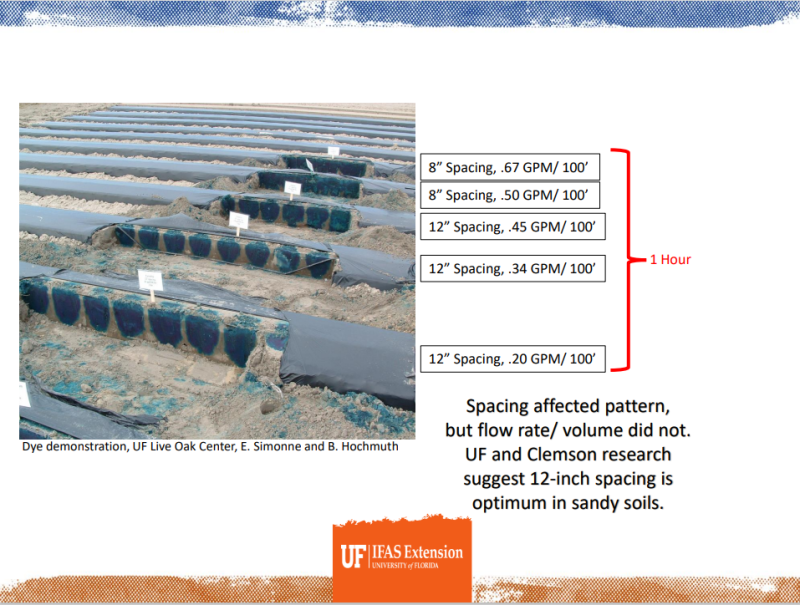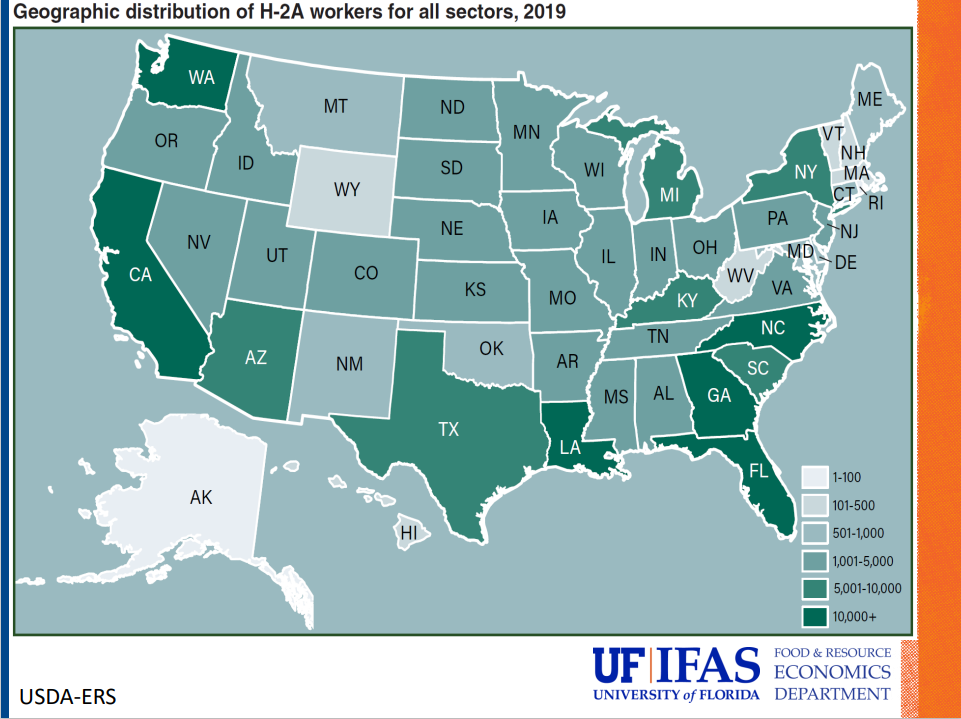The 2024 Tri-State Fruit & Vegetable Annual Conference was held on Wednesday, January 31. There were 6 educational presentations and a tradeshow with 14 booths with representatives who provide knowledge, products, and services to our growers in the Tri-State area. This event offered Continuing Education Units (CEUs) for pesticide applicators in Florida and Georgia, as well as Certified Crop Advisors. This article provides links to review or print the presentations from this conference as a review, or for those that were not able to attend the event.
The focus of the Tri-State Fruit & Vegetable Conference is commercial fruit and vegetable production. Our speakers included UF/IFAS Extension faculty, government agencies, UGA Extension, and university specialists discussing topics on program assistance to growers, sustainable water management, growing practices, and insect transmitted diseases in cucurbit varieties. Provided in this article is a summary from each presentation, as well as direct links to download each presentation.
The first presentation was presented by Anthony Williams, USDA Farm Service Agency (FSA) Jackson County Executive Director and Codie Boyett, Acting District Conservationist for USDA Natural Resource Conservation Service (NRCS). Both are based at the Jackson County Service Center in Marianna, FL. Mr. Williams discussed the Non-insured Crop Disaster Assistance Program (NAP), a program designed to be a financial risk coverage for growers who cannot obtain normalized crop insurance on their crops. If a crop is not insurable in the county you are growing in, then it may be eligible for NAP assistance. You can apply for this form of coverage on a yearly basis, and if a calculable loss occurs during your growing season, you must file a Notice of Loss with your county Farm Service Agency office. For more information on this program, the program fact sheet can be accessed below.
Informational Handout Link: Williams NAP
–
Codie Boyett represented the NRCS Marianna Area Office and Jackson County Service Center and walked our attendees through one of the conservation programs called the Environmental Quality Incentive Program (EQUIP). The EQUIP program can provide financial assistance to growers and forestry landowners to address conservation concerns such as water quality, soil health, soil erosion and more. There is a unique application and ranking system that takes place for producers to be accepted for assistance. Mrs. Boyett’s presentation can be viewed from this link:
1 – Boyett, NRCS presentation
–
Our second presentation was presented by Dr. Muhammad Shahid. Dr. Shahid is an Assistant Professor in Horticulture for the University of Florida and specializes in research of stress physiology in fruit crops. He is appointed to the North Florida Research & Education Center (NFREC) in Quincy, Florida. His presentation explained the processes and steps of turning a conventional growing practice into a certified organic operation. Dr. Shahid put into detail the length and time of what the organic transition would look like and how to become a certified organic grower with USDA. The picture below is an example of page mandarin crops that were both grown either conventional or organic for results to be compared.
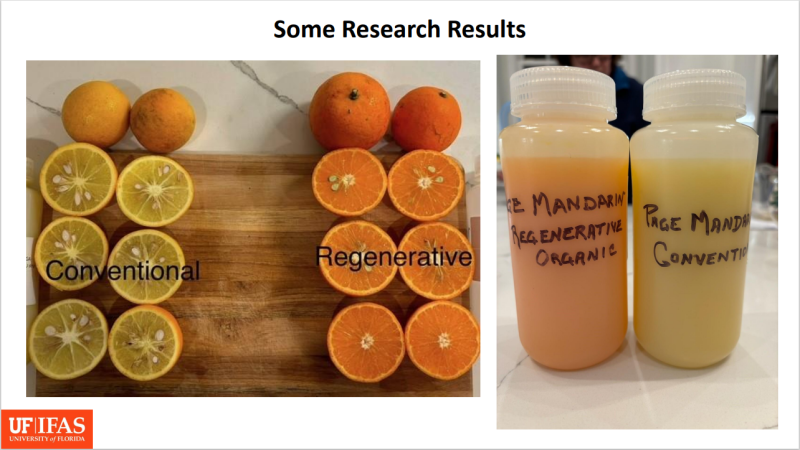
Muhammad Shahid, NFREC- Quincy
Dr. Shahid also discussed different Integrated Pest Management (IPM) pathways for organic growers, as well as organic methods of nutrient management. If you would like to find more information on Dr. Shahid’s presentation, please use the following link:
2 – Shahid, Organic Farming
–
Our third speaker traveled to us from Tifton, Georgia. His name is Dr. Theodore McAvoy, who is the Vegetable Extension Specialist with University of Georgia Extension (UGA) based at the Tifton Campus. Dr. McAvoy shared his experience and knowledge gained through research trials with cucurbit vegetable species diseased with whitefly transmitted viruses in the state of Georgia. The main viruses that are transmitted by the whitefly insect are Cucurbit Leaf Crumple, Cucurbit Yellow Stunting Disorder, Chlorotic Yellow virus, and Squash Vein Yellowing Virus. Dr. McAvoy conducted cucurbit variety tests in the Fall of 2023. In the picture shown, you are able to see the varieties that he tested.
–
Dr. McAvoy walked the attendees through noticeable virus symptoms that were ongoing during his trials and the yield results after the trials were completed. If you would like a more in-depth look at Dr. Theodore McAvoy’s data, please use the following link to access his presentation:
3- 2024 SERFVC Whitefly McAvoy
–
Bob Hochmuth presented the fourth presentation. Mr. Hochmuth is a Regional Extension Agent who specializes in vegetable crops and is also the Center Director for the North Florida Research & Education Center in Live Oak, Florida. His presentation covered the importance of optimizing water management for growers in their irrigation systems. Bob is known for his “blue dye” tests in his irrigation research. The use of blue dye in the irrigation line provides a hands-on way to see the water movement and depth the irrigation water is penetrating the soil. His presentation touched on blue dye tests in both drip irrigation and overhead irrigation.
–
The picture above, from Mr. Hochmuth’s presentation, shows a dye test conducted with drip irrigation with different spacing patterns and how it affected the flow rate of the irrigation water. Use the following link to view his entire presentation:
4- Hochmuth Irrigation Management
–
With labor being a key challenge in many farming operations, Dr. Derek Farnsworth was invited to give an insight to the growing H-2A labor program and the history behind it. Dr. Farnsworth is an Associate Professor on University of Florida’s campus in Gainesville and is appointed to the UF/IFAS Food and Resource Economics Department. With the falling numbers of the domestic labor landscape, agriculture producers are adapting by utilizing the H-2A labor program and filling the gap with temporary, legal workers from outside of the Untied States. H-2A is predominantly used in labor intensive crop production such as fruit and vegetables. This labor program has been around since the early 1900s but has had different names and carrying capacities.
Dr. Farnsworth briefly reviewed the history of the program and how it became the H-2A program as we know it today. The picture above illustrates the distribution count of H-2A workers in the U.S in 2019. This program is most prevalent in the Southeast region of the U.S and in Western states such as California and Washington, which have expanded most in recent years. If you would like to review a more detailed version of Dr. Farnsworth information, you can access his link at this link:
5 – Farnsworth H-2A Labor
–
The sixth and final presentation was given by Dr. Vivek Sharma. Dr. Sharma is an Assistant Professor for the Agricultural and Biological Engineering (ABE) Department for the University of Florida. His topic hit very close to him to coincide what Mr. Hochmuth presented on. Dr. Sharma discussed Florida water management challenges and the importance of precision irrigation management, and how we can use soil moisture sensor technologies to create better management practices for irrigation scheduling. By using a soil moisture sensor, growers can understand the depth that their irrigation is saturating the soil to effectively irrigate their crops. Below is a diagram of things to consider when selecting a soil moisture sensor created by Dr. Sharma.
–
Dr. Sharma is known for his work under the Florida Agricultural Soil Moister Sensor Network, which is a network used to educate producers and extension agents, while working alongside the Florida Department of Agriculture & Consumer Services (FDACS) to increase more growers adoption of irrigation Best Management Practices (BMPs) throughout the state to conserve water resources. To access more information about the Florida Agricultural Soil Moisture Sensor Network, please use the following link to access Dr. Sharma’s presentation:
6 – Sharma, Soil Moisture Network
–
In addition to the meeting, we had a tradeshow with 14 businesses and organizations that provide goods and services to fruit and vegetable growers in the Tri-State area. Below are some photos from the day of the event. –
–
Thank you to our sponsors who contributed to this event. Without them, the Tri-State Fruit & Vegetable Conference or our luncheon would not have been possible.
Mark your calendars for the 2025 Tri-State Fruit & Vegetable Conference on Wednesday, January 29, 2025!
- 2026 Tri-State Fruit & Vegetable Conference – January 29 - November 7, 2025
- Direct Marketing: How Panhandle Produce Growers Are Adapting - October 10, 2025
- Nutrient Management for Vegetable Growers in the Florida Panhandle - April 4, 2025


